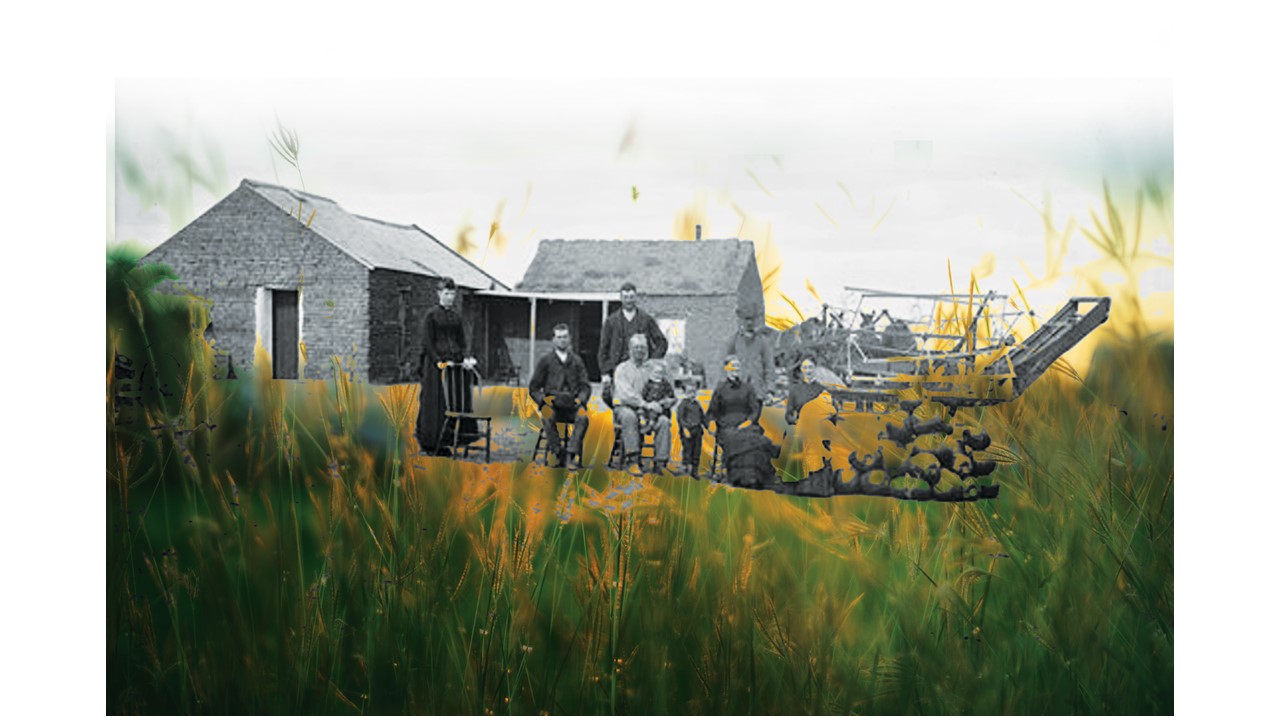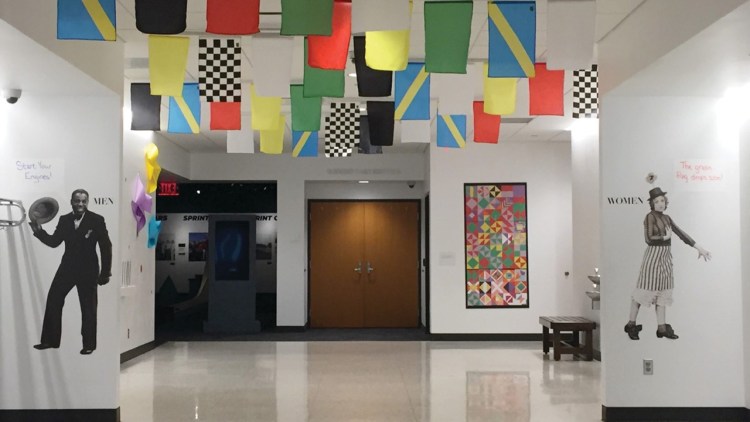
This article originally appeared in the September/October 2019 issue of Museum magazine, a benefit of AAM membership.
History Nebraska’s museum recently reopened following extensive infrastructure renovations. Prior to the renovations, attendance had been in decline, and the 18-month closure did not put us top of mind in the community.
The museum was essentially a big blank box. Our small staff was doing what it could, but our public programs needed a jolt of energy. Given that museums are nurturers of curiosity, we felt we first had to feed ourselves before effectively serving the public’s thirst for curiosity. So History Nebraska applied for and received a $25,000 grant from the IMLS Museums Empowered initiative to develop staff capacity for audience-centered engagement focused on the concept of museums as nurturers of curiosity. Working with museum consultants Rainey Tisdale and Susie Wilkening, 25 History Nebraska staff members, and volunteers explored the significance of curiosity in engaging new visitors.
Although the grant focused primarily on our staff at the Nebraska History Museum, we discovered that harnessing curiosity in all teams in our state agency, which include collections, archeology, historic sites, and historic preservation, transformed staff members’ thought processes and allowed us to serve the public in creative and inspired ways. Understanding the way curiosity works and discovering how it applies to our own lives gave us new perspectives on our audiences and ultimately our work culture.
This investment in our staff has allowed us to define a common language, leverage curiosity internally and more broadly, build camaraderie to bridge silos, and embrace risk-taking. Best of all, we have no doubt that the Curiosity Project can be replicated in other museums.
Why Curiosity Matters
Wilkening’s and other research indicates that curiosity is an important driver for societal goals, such as education, physical and social well-being, creativity, and civic engagement. Curious people are more likely to visit libraries and cultural institutions, read the news, support philanthropies, have greater compassion and empathy, and engage in a variety of lifelong-learning opportunities.
Curiosity is an innate trait that can diminish as we age. By adulthood, only 5 percent of people are still intrinsic learners who seek knowledge or new experiences for the love of it. Others are more extrinsically motivated, needing to know that their efforts will be rewarded.
During an introductory two-day workshop conducted by Tisdale and Wilkening, we learned the science of curiosity, its influence on the brain, and how it inspires intrinsically and extrinsically motivated learners. Additionally, we explored what makes us curious, how curiosity makes us feel, and what happens when it is stifled.
Through our workshop, we learned that people do not generally digest an entire exhibition as we script it; instead, they pick and choose what they want to explore. However, we can elicit curiosity by crafting “information gaps” in an exhibition that guide visitors to further exploration and deeper understanding, an act we equated to searching for “curiosity truffles.” When visitors find the information, somewhere in the sweet spot between stumbling over the answer too easily and having to dig too hard, this moment of success provides a hit of dopamine, the brain chemical involved in generating pleasure and satisfaction as part of our internal reward system.
In other words, feeding curiosity feels good and is addictive! Tisdale recommended layering content within an exhibition so there are “truffles” that appeal to various age groups and interests. And she advised us to create a safe space in which any question could be asked. After the workshop, we were motivated to foster a new organization-wide culture of curiosity. Since only one-quarter of the staff had attended the initial workshop, we shared what we had learned with everyone at the next monthly staff meeting.
Subsequent staff meetings have featured Curiosity Moments where we exchange interesting information from old newspapers or photographs from collections. These brief presentations gained momentum when we invited the second cohort of workshop attendees to share what they found curious. The buyer for the museum store showed toys that young visitors find most curious. An archivist highlighted a satirical newspaper edition that upon further research yielded a late-19th-century tale of prejudice and vandalism in a now-defunct township. Our photographs curator has created a monthly caption contest for strange and befuddling photographs in the collection.
We have also implemented a new project proposal process to evaluate potential exhibits and activities that asks the writer to consider how the project will engineer curiosity. And History Nebraska has been more encouraging of staff attending conferences and seeking staff development opportunities to satisfy their own curiosity. A statement that starts with, “Well, I was curious, so I…” is met with understanding nods throughout the organization.
Valuing Curiosity
If we are looking at our museum, indeed our entire organization, as a curiosity laboratory, then an important part of the experiment is evaluation. With Wilkening’s help, we have developed exit surveys for visitors to integrate those lessons into new projects. Wilkening has also created annual staff surveys to evaluate how the Curiosity Project is affecting us as a group. Among the findings, staff members who have been with us for six to 11 years showed a substantial growth in their curiosity and engagement. New staff hired during the project showed the highest average curiosity scores, indicating that our emphasis on hiring for curiosity has been successful.
However, some staff members were not particularly influenced by this new undertaking. Staff who had been with the organization for more than 11 years did not, generally speaking, experience growth in their curiosity levels.
Nonetheless, many staff members know that their research projects inspired by curiosity are not a waste of time. They may lead to a blog or a social media post, a new idea, or perhaps eventually an article in our magazine or an independent exhibit. And as a staff, we now know that risk-taking and experimentation are valued and encouraged, even when the outcome is not immediately apparent.
But what about staff whose jobs do not necessarily lend themselves to creativity or curiosity? Accountants, staff assistants, and human resource professionals tend to have very prescribed roles within any organization. Were they to be left out of our Curiosity Project? Tisdale spent time with them this spring to strategize how to integrate curiosity into their work. After group members shared their strengths, each participant wrote down their typical tasks and identified which they liked and disliked. They were then asked to identify ways to engage curiosity or creativity to make unsavory tasks more palatable.
What We’ve Accomplished
So how has the Curiosity Project changed our museum? Our fourth-grade school tours, now called “Curiosity Labs,” were transformed from a didactic lecture model to an inquiry model. Docents were taught to spark curiosity in children by guiding them to investigate primary resources (or replicas of primary resources) through touchable objects.
For example, docents pass around replicas of travel trunks with false bottoms like those we have in the collection. The false bottom hides paper money, handmade collars or hankies, prayer books, and other personal items. The children are then asked three simple questions: What do you see? What does that make you think? What does that make you wonder? Through this probing, docents identify specific interests and ask additional questions that allow children to fill their own information gaps. This has been so effective that the docents who lead these tours are now called “curiosity guides”.
Our first big change in exhibition design was led by our museum curator, Laura Mooney. She had planned a short-term quilt exhibition based on those of the past—a dozen or more quilts carefully mounted so they could be seen in their entirety, with labels thoroughly describing them. Using what she learned about curiosity, Mooney reconfigured the exhibition to illustrate how colors combine to create other colors and how cost and technology limited quilters’ fabric choices or construction method. On the walls, we posted questions and motifs to explore to pique curiosity.
On average, surveyed visitors stayed 20 to 30 minutes longer in this exhibition than they had in past ones, and they were effusive about how intriguing they found it. As Mooney sagely noted, “When you give yourself permission to be curious, it affects your journey.”
In the 18 months since we began our curiosity journey, we have seen staff become more engaged, motivated, and creative. We have learned that curiosity affects our ability to build relationships with each other and our patrons, increase our professional expertise, solve problems and correct mistakes, and create engaging projects and exhibitions. Attendance at our special events and exhibition openings has vastly improved, due in no small part to the multilayered activities and programs that make them more intriguing and compelling. We hope to continue our journey by securing additional grant funds to extend our Curiosity Project to other cultural organizations in Nebraska so they, too, can learn how to champion curiosity in their work.
Curiosity Considerations
When looking to engage curiosity in staff or visitors, here are some things to keep in mind.
Consider hiring for curiosity. A simple question like “In our organization we value curiosity; what you are curious about?” will yield fascinating answers. In our experience, candidates either have nothing to say, or the list of what they find curious will overwhelm you.
Curiosity is not necessarily a great marketing hook. Susie Wilkening’s research shows that curiosity isn’t a great motivator for visitation, but it is a value many visitors aspire to. Thus, telling them, “This will feed your curiosity” won’t get them in the door. But affirming their curiosity, and putting them into a curiosity mindset, can deepen the visit (and encourage a return visit and/or positive word of mouth).
Not all truffles are created equal. One person’s fascinating fact will do nothing for someone else. Present visitors with a variety of truffles that cater to different age groups. Plant the truffles early in an exhibition so that visitors don’t get frustrated or bored.
Resources
Matthias Gruber, “This Is Your Brain on Curiosity” (video) youtube.com/watch?v=SmaTPPB-T_s
Todd B. Kashdan, et al., “Curiosity Has Comprehensive Benefits in the Workplace: Developing and Validating the Multidimensional Work-Related Curiosity Scale in the United States and German Employees,” PsyArXiv Preprints psyarxiv.com/tx7b5/
George Loewenstein, “The Psychology of Curiosity: A Review and Reinterpretation,” Psychological Bulletin, 1994 bit.ly/2XL5ZLI
Jay Rounds, “Strategies for the Curiosity-Driven Museum Visitor,” Curator, 2004 bit.ly/2Xck8ES








